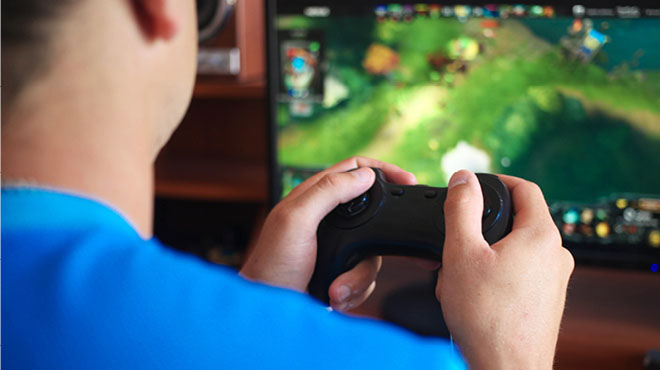The Silent Epidemic: The Growing Problem of Digital Addiction
Despite its many conveniences, the digital world contributes to an alarming new epidemic - digital addiction. Studies reveal that an average American checks their phone almost 96 times daily, fueling concerns about our dependence on technology.

Do you constantly check your phone? Are you anxious and irritable when you're away from your digital devices? Are you too engrossed in the screens of your gadgets?
If your answer to any of these questions is yes, you may suffer from digital addiction. In today's world, we depend increasingly on digital devices, but the consequences of this dependence can be dire.
The Rise of Digital Addiction
Digital addiction is a growing trend, and the numbers are staggering. According to a recent survey, people spend 6 hours and 42 minutes online daily on average. The number of internet users has increased by 1.3 billion since 2017—a trend that is expected to continue. Personally, I have seen my friends and family members become increasingly addicted to their digital devices. Their phones are always within arm's reach, and they check their notifications constantly, even during conversations.
I am especially concerned about future generations, such as my grandkids, adolescents, and young adults, who are growing up in an environment where digital devices are the norm. In the US alone, over half of teenagers have smartphones and spend 8 hours or more on their phones daily. Even more concerning is the fact that this trend is becoming increasingly common—to where it is now considered socially acceptable behavior.
Understanding Digital Addiction
Digital addiction can be defined as excessive use of digital devices to the point where it interferes with daily life. Symptoms of digital addiction can include insomnia, anxiety, depression, and even physical issues like eye strain and carpal tunnel syndrome. Scientific research has shown that digital addiction affects the same parts of the brain as substance abuse, and the withdrawal symptoms can be similar too.
Digital addiction does not just manifest as a straightforward dependence on devices — it extends to specific activities on these platforms, such as social media usage, online gaming, and constant streaming of digital content. Each of these can form its own subset of digital addiction, drawing users into a cycle of dependency that is hard to break.
When people engage in these activities, their brains release dopamine, a neurotransmitter associated with pleasure and satisfaction. This reward system can create a loop, encouraging repeated behaviors and making it harder for individuals to disengage from the addictive activity. This loop can be compared to other forms of addiction, such as gambling, where the person engages in a behavior that provides a temporary sense of pleasure but ultimately causes harm.
Moreover, digital addiction can exacerbate issues of self-esteem and social anxiety. The curated lives displayed on social media platforms can lead to feelings of inadequacy, while the anonymous nature of online interactions can foster a disconnect from real-world social situations. This can cause individuals to find solace in the digital world, further fuelling their dependence.
The Impact of Digital Addiction
The impact of digital addiction is not limited to mental health. Studies have shown that digital addiction can significantly impact physical health, too. This includes eyestrain, headaches, neck pain, and carpal tunnel syndrome. Digital addiction can hamper social relationships and work productivity. It can lead to reduced face-to-face interactions and lack of concentration.
The insidious nature of digital addiction seeps into various facets of life, leaving lasting repercussions. It has been observed that excessive screen time triggers sleep disorders due to the suppression of melatonin, the hormone responsible for regulating sleep-wake cycles. This can lead to chronic sleep deprivation, adversely affecting mood, cognitive function, and overall health.
The continuous bombardment of information and the need to keep up with the digital world can lead to chronic stress and burnout. This constant state of alertness can induce anxiety disorders and feelings of isolation and loneliness, further escalating into more severe mental health issues like depression.
In children and adolescents, digital addiction can hamper their developmental and academic progress. Excessive screen time can interfere with homework, reading, and extracurricular activities. It can also inhibit the development of essential skills, such as problem-solving, communication, and social interaction.
"In the digital era of endless possibilities, remember, the power to unplug lies within you."
Addressing the Issue
To tackle digital addiction, promoting the balanced use of technology is necessary. We must be mindful of our digital usage and set boundaries. Setting aside time for activities such as exercising, reading a book, or spending time with friends and family is critical to maintaining a healthy relationship with technology. Schools and workplaces must also have policies limiting digital usage and promoting breaks. As a society, we must encourage schools and community centers to offer alternatives to digital activities.
Some steps to combat digital addiction:
- Self-Regulation: Be aware of your current online habits and take steps to control the time spent on the internet. You can use timer apps or your devices' built-in digital wellness features to limit the time spent on certain apps.
- Digital Detox: Dedicate specific time slots for digital breaks. Start with small durations, like one hour a day, and gradually increase.
- Engage in Physical Activities: Engage in physical activities such as sports, exercise, or even simple walks. These activities promote health and serve as a great distraction from digital devices.
- Prioritize In-Person Interactions: Prioritize face-to-face communication over digital communication. Physical and social interactions are more fulfilling and can help reduce dependency on digital platforms.
- Set Tech-Free Zones: Have designated areas in your home that are free from digital devices. This can include the dining area or the bedroom, encouraging more personal interactions and better sleep hygiene.
- Create Realistic Goals: Set realistic goals for reducing screen time and try your best to stick to them. Gradual changes are more sustainable than drastic alterations to your routine.
- Professional Help: If digital addiction seems to be severely affecting your life and self-help strategies aren’t working, it may be time to seek professional help. Some therapists and counselors specialize in dealing with digital addiction.
Remember, the goal is not to completely eradicate the use of digital devices but to create a balanced and healthy relationship with technology.
Conclusion
Digital addiction is a silent epidemic that is taking over our lives. It is essential to be aware of the impact of excessive digital usage and take steps to mitigate it. By investing time in relationships, picking up a new hobby, and setting boundaries with technology, we can better balance our digital and non-digital lives.
Awareness and intervention by schools, workplaces, and policymakers can also make a difference. Given my career, I know it's strange for me to say this, but let's all take a moment to reflect on our digital habits and take steps to reclaim our lives from the digital world's grip.
Additional Articles/Resources
Numerous resources are available for those seeking to delve deeper into understanding digital addiction. These materials offer practical strategies, expert insights, and research-based information on mitigating this modern-day epidemic's impacts.
By sharing these resources, I am not endorsing them. It is for informational purposes only and not medical advice. Please check with a professional before taking any action.



Phil McKinney Newsletter
Join the newsletter to receive the latest updates in your inbox.







